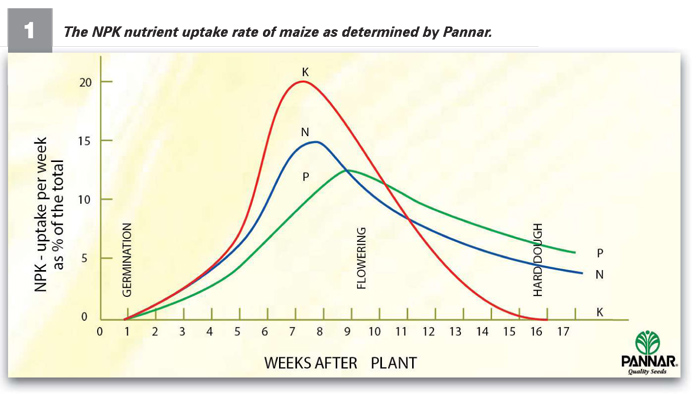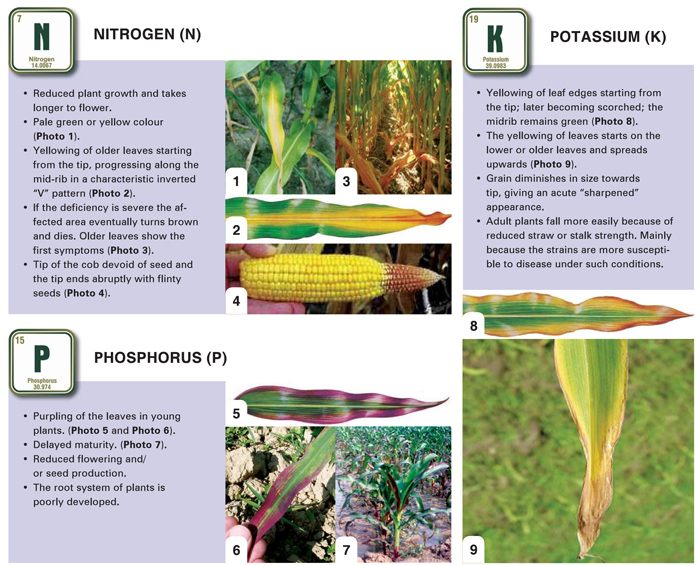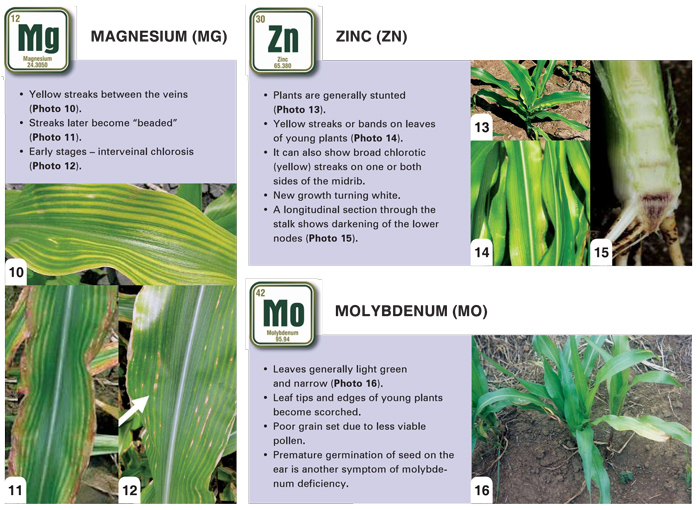March 2019
| Pietman Botha, Pula Imvula contributor. Send an email to pietmanbotha@gmail.com |
 |
For any crop including maize to produce optimally, the necessary moisture and fertiliser elements must always be available as needed by the plant.
The main macro elements commonly required by a plant are Nitrogen (N), Phosphorus (P) and then Potassium (K) but there are a number of other elements such as Magnesium (Mg), Sulphur (S), Calcium (Ca), Zinc (Zn) and Manganese (Mn) that is needed for optimal growth.
Nitrogen (N) is responsible for the life processes such as photosynthesis, growth and reproduction. The maintenance of genetic identity are co-determined by nitrogen. The prominent effect of nitrogen is that it gives the characteristic green colour to leaves and the vegetative growth of plants is associated with nitrogen.
Phosphorus (P) also plays a role in photosynthesis, growth, reproduction and maintenance of genetic identity, and also plays a role in the respiration process. Phosphorus is particularly associated with cell division, root growth, flowering and maturation of the crop.
Potassium (K) is associated with the straw or stalk strength (especially in grains), drought and cold resistance and fruit quality. It promotes the formation of protein, sugar, starch and oils.
In Graph 1, the NPK nutrient uptake rate of maize as determined by Pannar is shown. According to Graph 1 it is very important to have all the elements available in time for the plant to produce optimally. Before blossoming, most of the nutrients are already absorbed by the plant. This make it so important that all nutrients must be available on time.
 According to the Fertilizer Association of South Africa’s publication Fertilizer Handbook, 1 ton of marketable maize (stubble is left on the field) will remove about 15 kg N, 3 kg P and 4 kg of K, 0,5 kg Ca, 1 kg Mg and 4,5 kg S. This means that a 4-ton yield will need 60 kg N, 12 kg P and 16 kg of K, 2kg Ca, 4 kg Mg and 18 kg of S. Remember this is kilogram of the different elements not the kilogram of fertiliser that is applied.
According to the Fertilizer Association of South Africa’s publication Fertilizer Handbook, 1 ton of marketable maize (stubble is left on the field) will remove about 15 kg N, 3 kg P and 4 kg of K, 0,5 kg Ca, 1 kg Mg and 4,5 kg S. This means that a 4-ton yield will need 60 kg N, 12 kg P and 16 kg of K, 2kg Ca, 4 kg Mg and 18 kg of S. Remember this is kilogram of the different elements not the kilogram of fertiliser that is applied.
This information must be included to decide how much and what fertiliser to apply for optimal maize production. Soil sample results and the soil potential must also be incorporated to determine the fertiliser and lime needs.
Deficiency symptoms for different element shortages
Deficiency symptoms are common for different element shortages. If these symptoms are seen there will be a reduction in yield.
It is important not to see this deficiency in the fields but to prevent this by applying sufficient fertilisers for optimal production.


Publication: March 2019
Section: Pula/Imvula